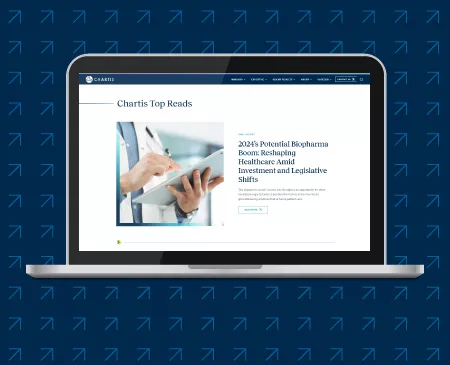From Portland, Maine, to Portland, Oregon, the story was the same: When the COVID-19 pandemic hit, healthcare supply chains were upended, and providers and administrators alike were sent scrambling for personal protective equipment and other supplies. Just-in-time was out. Just-in-case was in.
But in time, the pandemic experience also hammered home some valuable lessons about how pivotal non-labor expense management had become for long-term performance improvement. Yes, it can bring financial relief, but it can also boost operational excellence, drive technological transformation, and concretize organizational readiness for implementing strategic and tactical priorities.
In fact, as inflation and the Great Resignation have taken hold, non-labor services—which make up some 40–45% of operating expenses—need to now be appreciated for what they are together: a pillar in enterprise-wide strategic performance.
Following are 4 ways healthcare organizations can increasingly leverage non-labor services to meet organizational goals.
1. Go Ahead and Squeeze the Supply Chain
Most healthcare leaders would be surprised to learn they could save their organizations up to 14% on medical supplies, including 7% on clinical commodities and non-clinical supplies, 15% on clinical preference items, and 20% on physician preference items. But those are typical savings we see with clients.
Too many healthcare organizations leave the majority of their purchases to group purchasing organizations (GPOs). It’s important to remember that while GPOs provide other services, they are often aggregators of pricing when it comes to supply cost. That means they cannot always achieve the best pricing on the products that are most critical to your organization’s cost structure. Vendors do not always give their best prices to GPOs because the largest members will still want even further discounts.
Don't waste your contracting teams’ time on bandaids and tongue depressors—GPOs do a great job on those things—but when you’re buying expensive physician-preference items, consider the prices you get from GPOs to be simply a starting point. With the right framework, you may very well be able to negotiate better directly.
Also, it’s time to bring clinicians into the mix. Many might say they prefer having 15 or 20 different options for, say, spinal screws, but most would accept reasonable reductions if they were properly incentivized. But take your time with this; getting 15 down to 5 could take several years—and an incremental approach can be a more effective one.
2. Take a Fresh Look at Purchased Services
Purchased services often are overlooked—even though they account for about 40% of supply chain costs—because they are usually locally managed.
Plus, purchased services pose a significant management challenge because of their complexity, specificity, and poor visibility. And many organizations just have marginal controls over them. A multi-pronged approach to purchased services—with in-depth analysis of spend patterns and service rationalization—is critical to containing their costs.
When working on non-labor optimization, one of the first things to do is review your organization’s footprint of services, then analyze your spends and consolidate your service providers. It’s also important to conduct a forensic review of invoices for appropriateness of service and to compare outsourcing and in-sourcing opportunities.
3. Think Beyond Lowering Costs
Pharmacy services and drug costs may be a significant and growing portion of non-labor healthcare costs, but they are also significant revenue opportunities.
The 340B Drug Pricing Program is a case in point. It allows qualifying providers—such as hospitals, clinics, and associated facilities typically serving uninsured and low-income patients under the discounted 340B program —to purchase outpatient drugs from manufacturers at discounted prices. Experience navigating the 340B program is invaluable, as compliance is byzantine and requirements are ever-changing. Focusing on ambulatory services by expanding infusion and specialty clinics can further contribute to revenue opportunities—as can maturing the 340B program at contract pharmacies and provider-based clinics along with strategic integration of pharmacy benefit management (PBM).
As an increasing percentage of services and drug spend moves to the non-acute/outpatient setting, it is imperative that pharmacy, finance, revenue cycle, and managed care colleagues work closely to ensure optimal medication revenue integrity through timely and correct prior authorization completion, denial management, comprehensive charge capture, and other efforts designed to reduce revenue leakage.
Many integrated delivery networks and large health systems have progressively become shared service providers beyond their own networks, creating revenue streams while enhancing their service levels. Examples include IT, laboratory, bio-med, revenue cycle, linen, and sterile processing.
4. Embrace the Technology Journey
The benefits of leading-edge IT keep growing. Technology and information management are at the forefront of applications, infrastructure, workforce, and connectivity—and organizations can even leverage existing vendor relationships to negotiate cost reductions based on utilization and pricing strategies.
Along the same lines, numerous report cards and scorecards are available to help administrators and providers themselves keep track of clinical performance. The measures may change, depending on the clinical context, but organizations can always prioritize specific high-cost service lines.
All of this reinforces a timeless axiom in healthcare: If you measure what you’re doing, your outcomes will always be better. Careful cost accounting helps leadership and end-users know exactly where they are succeeding and where they need to improve.
Organizations need to spend time making sure their technology serves their operational needs well. They should consider targeted investments in technologies that will support measurement and accountability—such as cloud-based enterprise resource planning (ERP) systems—and do so in ways that will ultimately optimize the organization’s performance and savings.
Expect More and You’ll Get More
As healthcare organizations struggle to find ways to cover booming labor costs, non-labor is an obvious place to look for greater savings. But cutting costs shouldn’t get in the way of enterprise-wide goals. Industry leaders will appreciate the many ways that rethinking non-labor services can support cost reductions and provide opportunities to contribute to revenue while also breathing new life into strategic performance planning.
© 2025 The Chartis Group, LLC. All rights reserved. This content draws on the research and experience of Chartis consultants and other sources. It is for general information purposes only and should not be used as a substitute for consultation with professional advisors.







